Drone technology is now inevitable in the world of photography. There’re many varieties of drones on the market, and if you’re planning to acquire a new drone and venture into aerial photography, you’ll have countless choices. Here, you’ll learn about the best camera drone on the market currently. Before getting into the in-depth review, the best drone for photography presently is DJI Mavic 2 Zoom.
The Best Drones for Photography
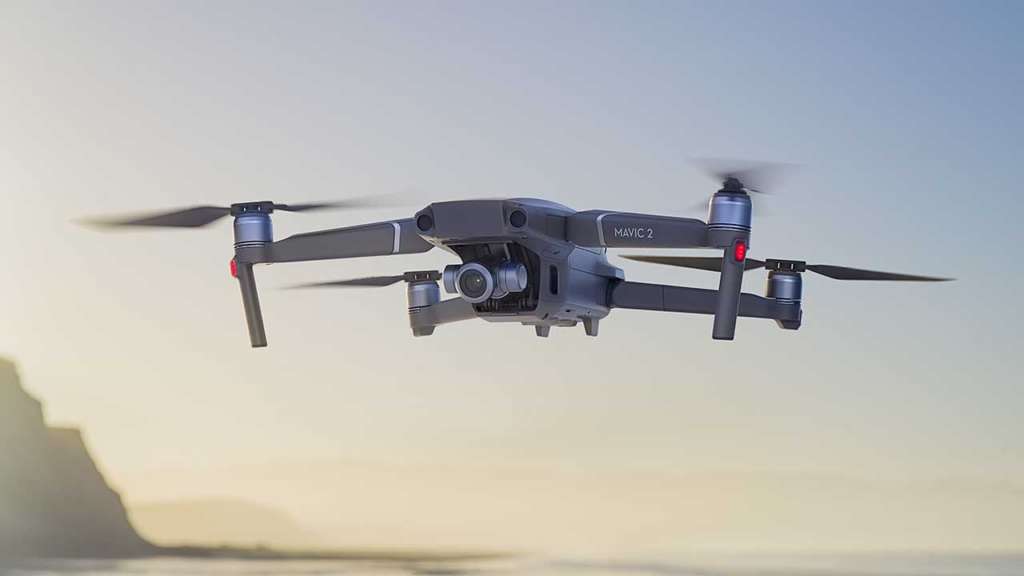
1. DJI Mavic 2 Zoom (Best Overall)
- Rating – 4.8
- Camera – 12MP, 4K Ultra HD
- Battery Life – 31 Minutes
- Ideal for filmmaking and photography
This drone offers incredible zooming capabilities. As a filmmaker or photographer, you’ll have more flexibility when framing your shots thanks to the 24mm to 48mm zoom lens, which provides 2X digital zoom and 2X optical zoom.
Mavic 2 zoom provides upgraded QuickShot mode and advanced tracking abilities. The incorporated Hybrid Autofocus enhances the drone’s speed by up to 40% with much better accuracy.
With 8GB internal storage, an SD card that supports up to 128 GB, 44mph maximum speed, 3-axis gimbal for steady shots, and 905G take-off weight, the drone guarantees a flight time of 31 minutes. The manufacturer designs it to optimize propulsion, lower noise, and reduce the consumption of power.
Pros
- Optical zoom
- Very portable
- Incredible features
- Easy, intuitive control
Cons
- Quite expensive
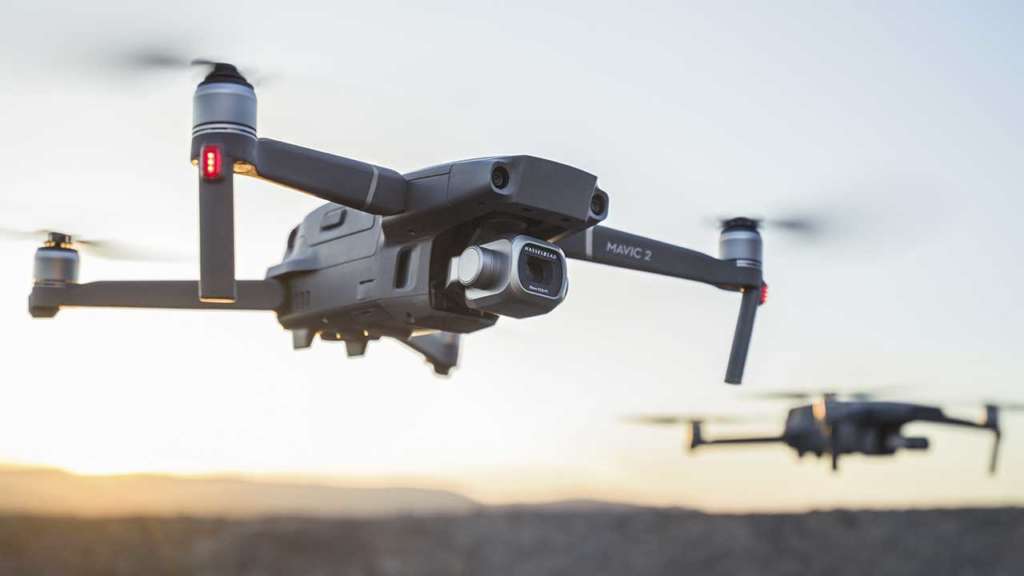
2. DJI Mavic 2 Pro (Best Value)
- Rating – 4.6
- 20MP camera
- Powerful and safe
- Incredible accessories
The drone’s intelligent features and compact size makes it one of the most popular drones in the industry. With a one-inch CMOS sensor and 20MP Hasselblad camera from the Swedish manufacturer, the drone guarantees photography with higher color sensitivity and HDR.
Its small size makes it a perfect size for content creators, videographers, and photographers. Since its portable, the Mavic 2 Pro is also ideal for documentary compilers, travel bloggers as well as the professional drone pilots in many industries.
It incorporates high-capacity LiPo cells that guarantee a maximum flight time of thirty-one minutes. The drone’s charger is multipurpose as it charges the remote controller and batteries concurrently. Even when on direct sunlight, the 5.5-inch 1080p display guarantees crystal-clear visibility.
Pros
- Innovative yet straightforward to fly
- Exceptional foldable design
- Low-noise design
- Intelligent flight modes
Cons
- No portrait shooting mode
- Noise is a nuisance above 100 ISO
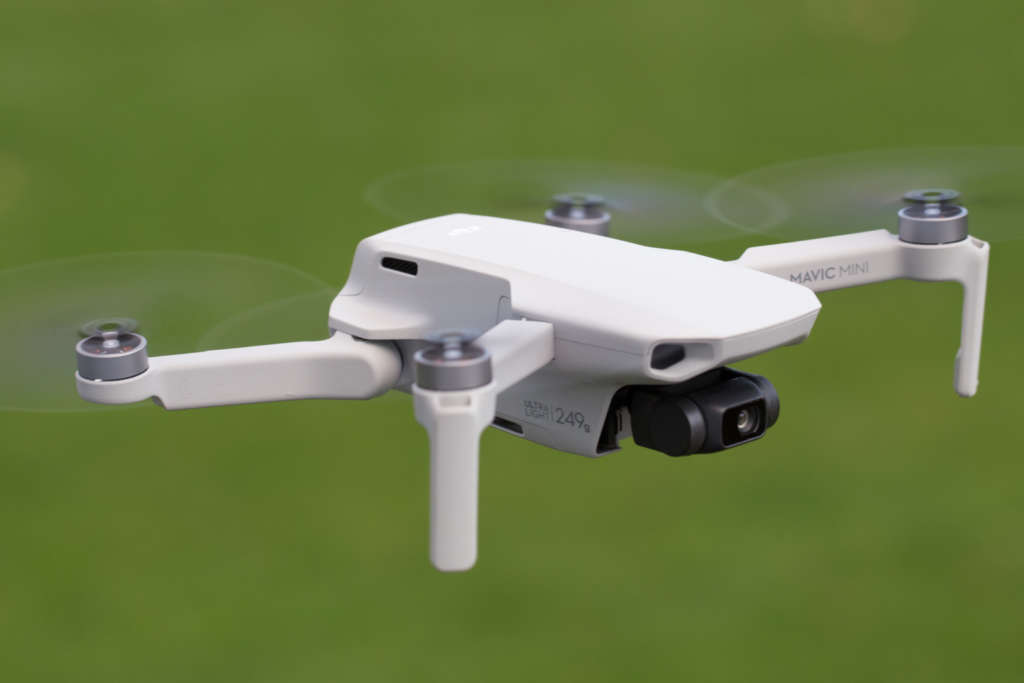
3. DJI Mavic Mini (easiest to carry)
- Rating – 4.7
- Portable and Compact
- Easy to use
- Amazing Accessories
Mavic Mini weighs under 250 grams, which makes it as light as a standard smartphone. This weight makes the drone incredibly portable and ranks it high in the safest and lowest weight drone’s category. Its take-off weight comprises of propellers, microSD card, and battery.
The drone assures an incredible and straightforward user experience thanks to the new DJO Fly application. With this, you can easily capture cinematic shots with a tap of the buttons. Besides, it comes with a flight tutorial, which helps you get started with the device safely and quickly.
You will have the option of choosing from the four incorporated flight maneuvers such as Circle, Rocket, Helix, and Dronie. The downward visual positioning sensors and the GPS receivers make it easy to operate the device. Also, it has an intelligent flight battery, an intuitive DJI smart controller, and a Mavic 2 battery charger.
Pros
- Collapsible and smart design
- Amazing stable video capture
- Smallest and lightest
- Easy to fly
Cons
- No 4K video
- No object tracking
4. PoweVision PowerEgg X Wizard (most resistant)
- Rating – 4.3
- The audio sync recording feature
- Waterproof and water landing mode
- Camcorder functionality
PowerVision is inevitably an innovative company that, aside from designing underwater drones, also designs flying drones. The drone comes with a tripod-mounted or handheld camcorder making use of AI (Artificial Intelligence) for subject tracking and the gimbal for stability. The most important thing about this drone is that it can fly in the rain or land on water.
As a professional videographer or photographer, you may worry as the drone’s 4K camera doesn’t guarantee a big sensor, but it may attain 60fps in good lighting scenes. Regarding its features, you can fold the props and detach the arms completely.
The waterproof functionality means attaching a landing and housing gear, which is quite effortless. The AI camera is incredibly impressive, but it lacks a record button.
Pros
- Wind resistance of up to 10m/s
- Standalone AI camera
- Waterproof
Cons
- Small image sensor
- Camcorder mode lacks a record button
5. DJI Phantom 4 Pro (Best extra features)
- Rating – 4.4
- 1-Inch 20MP Camera Sensor
- Elevated imagination and visionary intelligence
- 5-directions of obstacle sensing
The camera incorporates a one-inch 20MP sensor that quickly shoots 4K/60fps video. The magnesium and alloy construction reduces the weight and enhances the airframe rigidity, making it to have a lightweight.
The drone has an innovative Lightbridge HD video transmission feature that adds 5.8GHz transmission to the device. The capability to select between the 2.4GHz and 5.8GHz eliminates lag due to wind and enables you to cut through interference.
The fantastic features that Phantom 4 Pro comes to allow it to recognize an object automatically. It also follows and captures objects as they move, which makes it much easier to capture incredible and complicated shots.
Pros
- Active track feature
- Remote controller with an inbuilt screen
- It has gesture mode
- Easy to fly and use
- Intelligent batteries
Cons
- Constant system updates
- Limited battery life
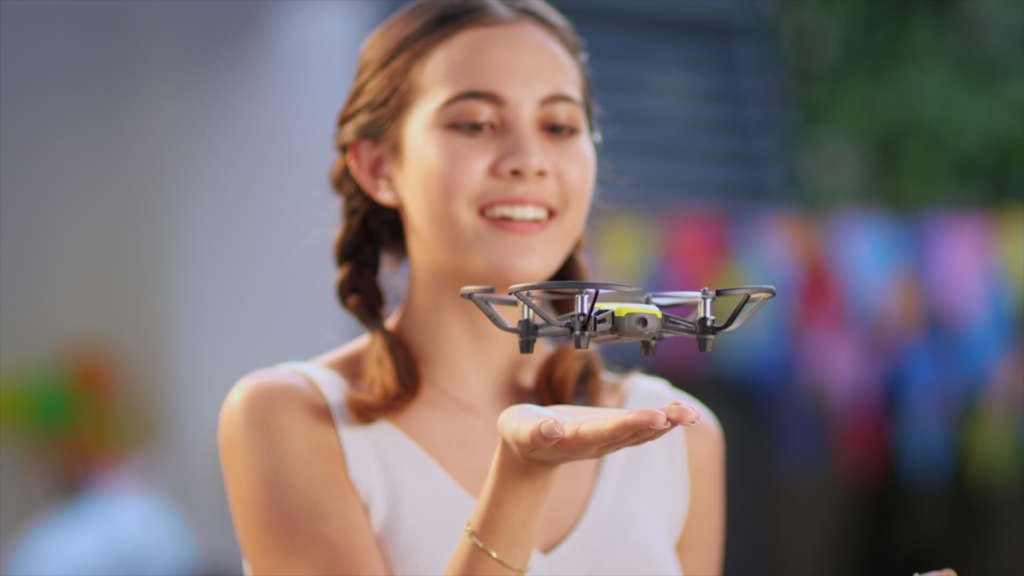
Ryze Tech Tello (Best Budget option)
Rating – 4.6
- Captures impressive videos and pictures
- It has a smartphone app
- Fantastic accessories
With a fantastic image processor, this drone has the capability of shooting excellent videos and photos. Even if you have got a few flying skills, you can record synchronized short videos with 360, Up & Away, Circle, and share them through your smartphone to social media.
Ryze Tello comes with a mobile programming application that easily supports scratch. You can command the drone to make movements by moving coding blocks from your smartphone. Discover programming fun with this drone!
Attaching and detaching the propellers is an effortless task, while the Tello flight battery recharges fast and evenly distributes power. The manufacturer offers propeller guards to guarantee a safe flight.
Pros
- Brilliant indoors
- Low price for the features
- An incredible way to begin learning to code
Cons
- Impossible to tilt the camera
- Relies on a smartphone to capture interference
How to Choose the Best Camera Drone
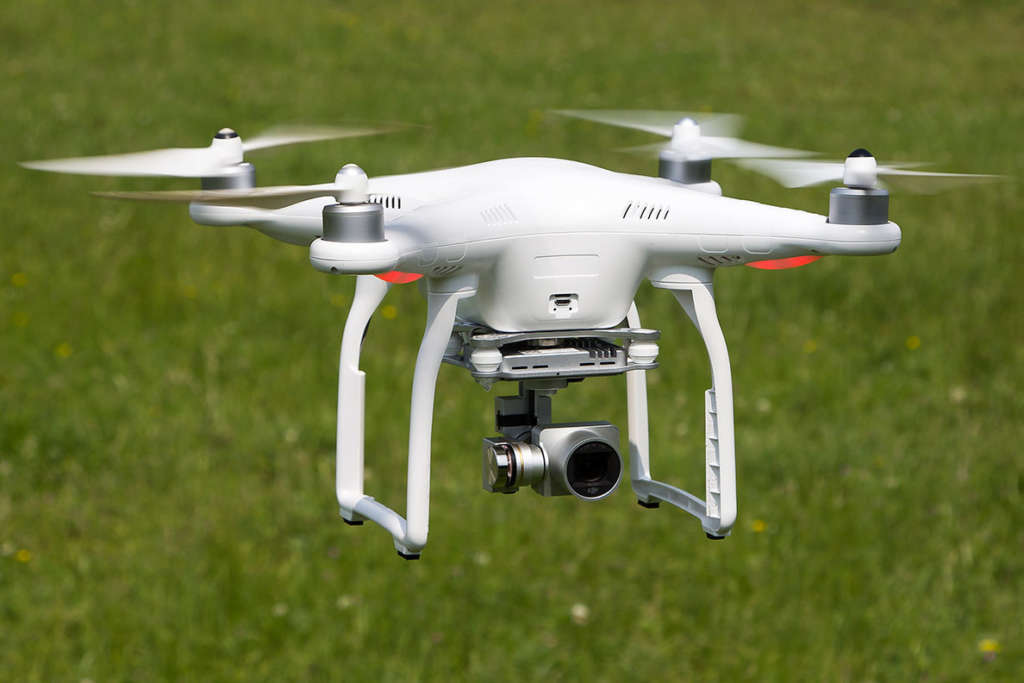
Perhaps you’re a photography or videography fanatic and in the course of making it a passion. Else, you’re a professional videographer or photographer looking forward to improving your tools. If you are in any of these groups, you may need to acquire a new drone. Here are the factors you need to consider when searching for the best drone for photography.
Select a drone according to your skills
When purchasing a drone, the first thing you need to consider is your skill level. Drones can either be hard or easy to fly. The drone’s design and features determine how easy to operate they are. In the market, there’re many drones designated for both novices and experts. The drone you opt to buy depends on how comfortably you can handle it.
Consider your requirements
There’re a couple of things that you can accomplish with a drone. While some drones are easy to fly indoors, some can fly indoors and outdoors. Some perform tricks and flips, while others enable you to take videos and photos. Thus, define your needs and then narrow down the options according to the things it can accomplish.
The features
In addition to selecting a drone that fits your demands and skills, choose a drone that has the exact features that you want. While most drones come with a camera, define the exact megapixels that you need in the camera. Other features to consider include battery life, GPS-enabled, integrated sensors, how easy it is to attach and detach the props, flight speed, among other features.
Affordability and Quality
Price is always an aspect when making any purchase. When it comes to buying a drone, the drones’ price varies significantly, and this can make it overwhelming. With this in mind, the cost can vary between a few hundred dollars to a thousand dollars. However, your budget should quickly narrow down the options.
After defining the cash that you need to spend, you can start thinking about affordability and quality. For instance, you may come across a cheap drone that comes with a poor make material. On the other hand, it’s possible to find an expensive drone that performs poorer than the mid-range drones.
Final Words
It doesn’t need to be a daunting task when choosing the best camera drone for your photography. If you search for a drone that matches your purpose and skills, then it should be effortless to find a drone. In this review, DJI Mavic 2 Zoom is the outright winner followed closely by DJI Mavic 2 Pro and DJI Mavic Mini.
DJI Mavic 2 Zoom combines incredible features and design and a lightweight shell, which makes it easily portable. When you purchase this drone, you get goodies such as intuitive control, inbuilt GPS, and stabilized 4K video footage.

